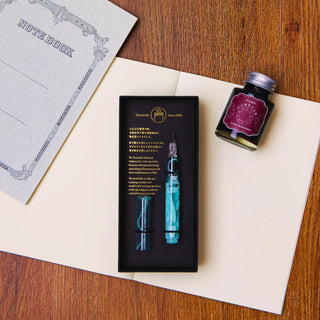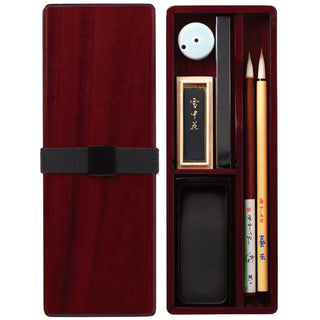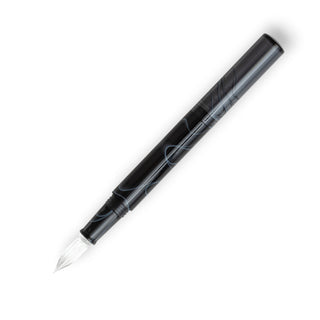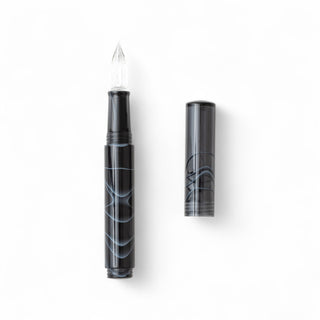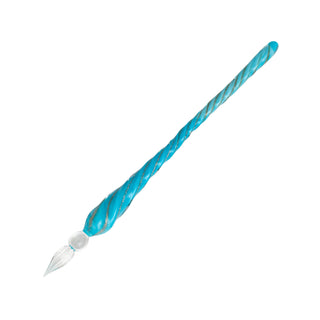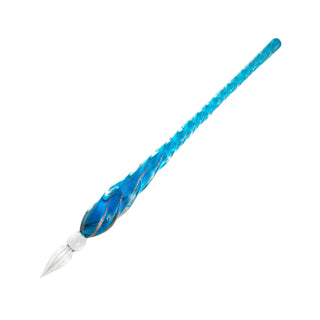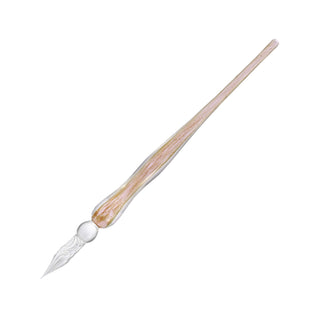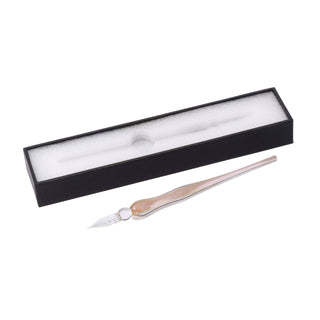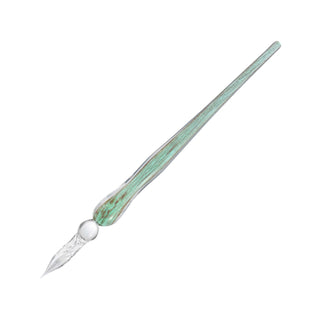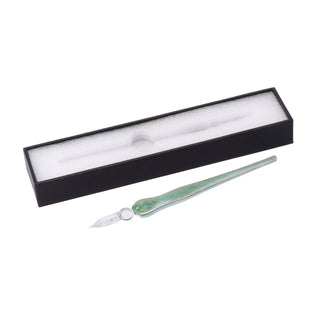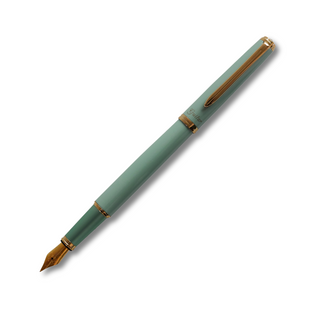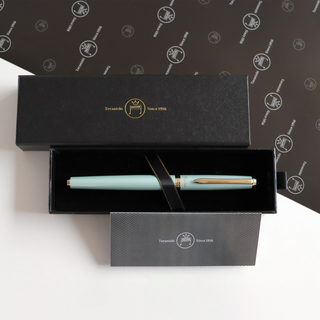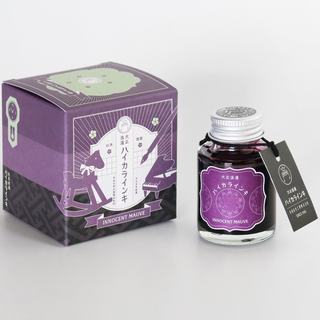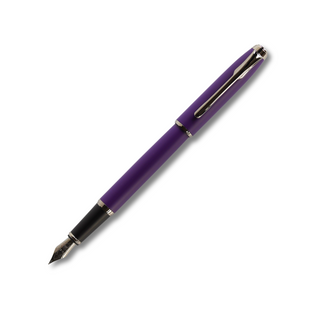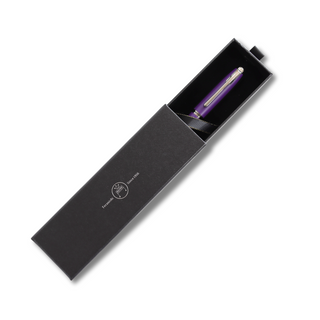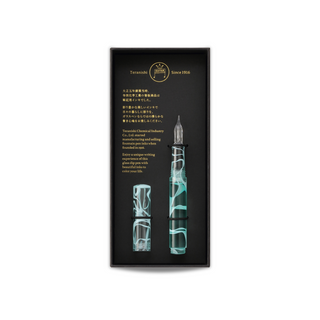
 Among unique writing instruments, the glass pen still manages to stand out. Its distinctive material and the artistic design of its pen tip, it is unlike any other pen you can find in the market. Unlike the fountain pens we discussed last week, the glass pen is categorized as a dip pen, meaning the pen does not have an ink reservoir that would feed the ink into the tip and onto paper. Instead, each time you write, you must dip the nib into an ink pot. Before we discuss further how the glass pen works, let us learn a little bit about its history, which will allow us to appreciate and understand this masterpiece a little better.
Among unique writing instruments, the glass pen still manages to stand out. Its distinctive material and the artistic design of its pen tip, it is unlike any other pen you can find in the market. Unlike the fountain pens we discussed last week, the glass pen is categorized as a dip pen, meaning the pen does not have an ink reservoir that would feed the ink into the tip and onto paper. Instead, each time you write, you must dip the nib into an ink pot. Before we discuss further how the glass pen works, let us learn a little bit about its history, which will allow us to appreciate and understand this masterpiece a little better.
Invention of the glass pen
Some sources suggest that glass pens were first created in the 17th century on Murano, an island in Venice, Italy, known for its rich glassmaking tradition. They were designed as a more durable and low-maintenance alternative to traditional quill pens. However, another theory traces the invention of the glass pen to Japan, where a wind chime craftsman named Sadajiro Sasaki is said to have created it in 1902. His innovation led to the establishment of workshops like Sase Kogyosho, which continues to produce glass pens to this day.
At Shibuya Stationery Store, we carry the Guitar Glass Pen Aurora, crafted by Teranishi. The Teranishi Chemical Industry was founded in Osaka in April 1916 by Teranishi Kouichi, half a century since the Meiji Restoration. As the company expanded overseas, it also established its Guitar trademark. They then started developing the Guitar brand under the trademark in 1931, at the beginning of the Showa era. From that point on, they went through a long journey to establish themselves and become who they are today. If you’re interested in learning more about their incredible journey, we highly recommend you check their Our History page, unfortunately, at this moment the information is only available in Japanese.
Among the Teranishi collection we carry at the Shibuya Stationery Store, the glass pen is especially unique. The one-of-a-kind, travel-friendly glass pen comes with a glass pen nib, a sturdy acrylic shaft, and a screw-on cap that will protect the fragile glass nib. 
FAQs on Glass Pens
-
What is a glass pen used for?
Thanks to its glass construction, the glass pen is incredibly easy to clean. Most inks rinse off instantly with just water, making it perfect for testing multiple inks without the risk of mixing colors. Additionally, the clear glass nib allows you to see the true color of the ink more accurately compared to other dip pens on the market.
-
How does the glass pen work?
A glass pen requires a separate ink pot for use. Of course, we highly recommend our Guitar Taisho Roman Haikara Ink by Teranishi for the perfect pairing.
The intricate grooves on the glass pen nib are not just decorative—they serve a functional purpose. When you dip the pen into the ink, these grooves hold the liquid, allowing gravity to guide the ink smoothly onto the paper as you write.
However, unlike fountain pens, glass pens do not allow for variation in line thickness by adjusting pressure on the nib. The line width remains consistent, offering a steady and elegant writing experience.

-
How to use a glass pen and maintain it?
Before using your glass pen, we recommend preparing three essentials: the pen itself, a pot of ink, and your writing medium.
-
When dipping your glass pen into the ink, avoid submerging it too deeply—only the nib should be coated. If there is excess ink, lightly touch the nib to the rim of the ink bottle to remove it. This prevents unwanted ink droplets from falling onto your writing surface.
-
To begin writing, angle the nib against your paper and glide it smoothly. As the ink starts to run low, you can gently rotate the pen to access the remaining ink stored in the grooves of the nib. If you're new to using a glass pen, there may be a slight learning curve in managing ink flow and knowing when to re-dip into the ink pot—but with practice, it will become second nature.
-
To clean, simply rinse with water, and use a little bit of soap and your fingertips or a cloth to get into the grooves of the pen nib if necessary. Then simply dry the nib with tissue before screwing the cap back on.
-
Caution: even though it seems unnecessary to mention, please keep in mind that the glass pen nib is made of glass! They can be chipped if not handled with care.
The glass pen is more than just a writing instrument—it is a blend of elegance, craftsmanship, and functionality. Whether you’re an ink enthusiast looking to test multiple colors with ease, a calligraphy lover searching for another interesting writing instrument to add to your arsenal, or simply someone who appreciates unique stationery, the glass pen offers a timeless and elegant way to put ink to paper. If you've never tried writing with glass before, now is the perfect time to experience its charm.



